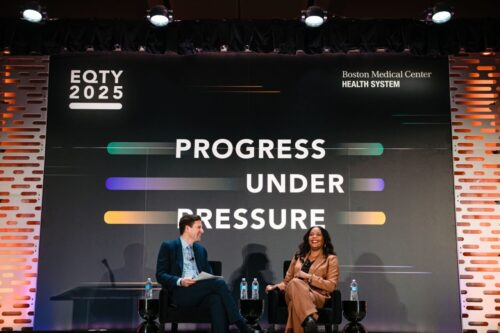Our Sickle Cell Clinic Was Struggling With No-Shows. So We Called an Uber.
May 21, 2019

Getty Images
A pilot program in a pediatric hematology clinic suggests ride-hailing services are an effective, low-cost solution for patients with transportation barriers.
Imagine you’re a working mother raising three children. Your 6-year-old son was born with sickle cell disease, a chronic condition that affects red blood cells and their ability to bring oxygen to the body’s organs. He requires ongoing care and must visit a pediatric hematology clinic at least four times per year. Without this preventative care, he’s at risk for acute and potentially life-threatening complications, including pain, infections, and organ damage.
The hematology clinic is in a city 40 miles away. It’s at least an hour’s drive (without traffic), but you don’t have reliable access to a car. Taking public transportation entails multiple trains and buses and a two-hour trip each way, plus exposure to the elements and to crowds — both of which are problematic for people with sickle cell disease at risk of infection. Your son’s care is covered by Medicaid, which provides transportation to eligible patients at no cost. But these transportation services aren’t always available at the time of the appointment, or the driver is late or doesn’t show, and as a result you frequently miss appointments.
We hear stories like this every day in our pediatric hematology clinic at Boston Medical Center (BMC). As an urban safety-net hospital, BMC serves a diverse population that includes a high proportion of patients who are new immigrants and have low income and Medicaid insurance. The challenges our patients face in making it to the hospital, and prioritizing healthcare in general, have made missed appointments an ongoing challenge.
Our clinic has an average no-show rate of 25% — twice the national average. In a survey of our families, 1 in 3 caregivers (32%) identified transportation as the cause of their missed appointments, and 1 in 4 (25%) reported not having or not being able to afford reliable transportation, also known as transportation insecurity. Even caregivers who do have a car have told us they need to take an unpaid day off work to drive to appointments, which is a significant hit for a family living paycheck to paycheck. Sometimes, at the end of the month, our families run out of money for gas.
Transportation is a common challenge for providers and patients
Our experience with no-shows is far from unique. Lack of access to care is common for people with sickle cell disease, which is predominantly found in people of African and Hispanic descent. Transportation challenges, which disproportionately affect patients of lower socioeconomic status, are a major barrier to care, and research has shown that longer travel distances to hematology clinics are associated with lower patient adherence. The importance of transportation is so well established that the American Academy of Pediatrics, in its position statement on managing sickle cell disease in children, recommends that providers discuss transportation with families.
Transportation challenges, which disproportionately affect patients of lower socioeconomic status, are a major barrier to care for people with sickle cell disease.
An obvious solution to these challenges is improved access to non-emergency medical transportation (NEMT), a federally mandated service that’s available free of charge to qualifying Medicaid patients and has been shown to be cost effective for patients with transportation insecurity. However, traditional forms of reimbursable NEMT require prior authorization and booking well ahead of time, and they can be cumbersome to use, inefficient, and inconsistent. In our clinic alone, we’ve heard stories of missed rides, late rides, and disputes with drivers.
The first step in caring for our patients is to just get them to the clinic. So we decided to call an Uber.
A novel approach to reducing no-shows
Consumers have been using the Uber app on their smartphones for nearly a decade, but the entry of Uber Health and other ride-hailing services such as Lyft into the $3 billion NEMT market is barely a year old. Unlike the consumer version of the app, Uber Health provides HIPAA-compliant privacy features and allows healthcare providers to schedule rides for their patients up to 30 days in advance and to pay for the rides directly.
Ride-hailing solutions for NEMT have increasingly attracted the attention of payers and providers transitioning to value-based care. A handful of case studies, peer-reviewed articles, and preliminary findings on the impact of these solutions have appeared to date, but to our knowledge, no data exists regarding the use of these services in pediatrics.
We got the idea to use Uber Health from our colleagues in BMC’s Refugee Women’s Health Clinic, an ob-gyn clinic that serves refugee, asylum-seeking, and new-immigrant communities. Beginning in January 2019, we rolled out Uber Health to all families in our pediatric hematology clinic currently receiving care for sickle cell disease. To be eligible for the service, families had to screen positive for transportation insecurity in the lead-up to their appointment, have access to a mobile phone or texting plan, and have access to car seats when needed.
Here’s how the intervention worked: Two days ahead of the appointment, during routine reminder calls, our clinic’s administrative coordinator asked caregivers if they had a way to get to their appointment. If the caregiver did not have transportation lined up, the admin informed the caregiver about the pilot program — and, if the caregiver expressed interest, ordered an Uber Health for the day of the appointment while still on the line. The admin also entered a note about whether the Uber was offered and accepted (or declined) into the electronic health record. Return rides were arranged at the end of the patient’s visit.
Uber Health pilot program results
During the pilot program, clinic staff contacted 86 caregivers with upcoming appointments. More than half (56%) of the caregivers who answered the phone reported transportation insecurity and were connected with Uber Health rides. The average cost of a ride was $60, and the average round-trip distance was 24 miles.
All 35 of the patients who took Uber Health showed up to their appointments, while the no-show rates for patients who reported they did not need transportation or were not reachable by phone were 14% and 17%, respectively. Moreover, patients who took Uber Health were more likely to be on time than patients who took other forms of transportation.
The impact of Uber Health on appointments was significant enough to reduce the clinic’s overall no-show rate by 8.5% in the 12 weeks following the intervention.
Uber Health also provided a better patient experience. Patients who completed a phone survey after receiving a ride reported that the service made them more likely to come to the appointment and more satisfied with their overall care.
Our staff had a better experience as well. Compared to traditional NEMT partners, the Uber Health rides were more predictable, easier to staff, and created a smoother workflow for our team.
Benefits outweigh the costs
Uber Health provided clear benefits to our patients, and it was also low-cost. The costs to Boston Medical Center of the Uber Health rides were far outweighed by the professional, hospital, lab, and pharmacy charges that the hospital expects to receive from the appointments. In fact, the projected charges associated with Uber Health visits exceeded the cost of the rides by a factor of nearly 20.
This cost-to-benefit ratio is especially important in the context of population health and value-based care. BMC belongs to four accountable care organizations (ACOs), groups of healthcare providers and payers (Medicaid and Medicare, in this case) that partner together to coordinate care for their patients. Care for the patients in the ACO are controlled by the state and reimbursed on a per-capita basis, so the ACOs and BMC are incentivized to keep their patients healthy while keeping costs low.
Simply put, it’s worth $60 for an Uber if it prevents an ambulance ride the following week.
The pilot program is over, but we continue to use Uber Health in our clinic and will continue to analyze the cost-effectiveness of the service. At least two other clinics at BMC, including a pediatrics asthma clinic, are planning to use the service as well.
Our experience to date suggests that Uber Health and other ride-hailing services are important new tools that deserve further exploration. Incorporating these services in the standard of care could have a profound impact on patient health, patient and provider satisfaction, and the sustainability of healthcare costs, especially for underserved populations with a high risk of transportation barriers.


